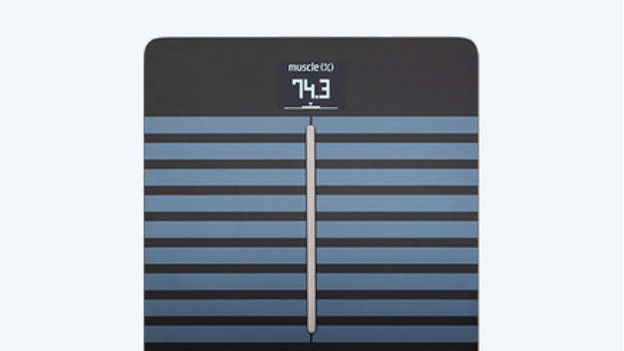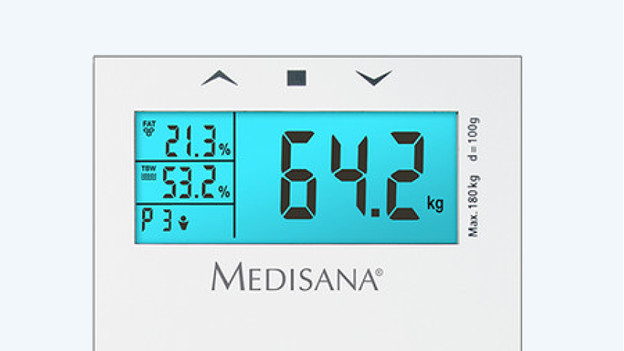
What measurement values does a personal scale have?
Weight

The most obvious measurement value of a scale is weight. Every personal scale measures weight. When we say weight, we mean your body weight. The measurement value 'weight' is mainly interesting when you want to gain or lose weight.
BMI

Apart from weight, some personal scales can also measure your BMI. BMI is short for Body Mass Index. This number tells you whether your weight is healthy for your body height. BMI determines whether you're overweight, underweight, or have a normal weight for your height. BMI measurement is mainly interesting when you consciously want to lose or gain weight. What your healthy BMI is, may depend on your background. Discuss this with your nutritionist, personal trainer, or doctor.
Body fat percentage

When a scale does a body analysis, it also measures your body fat percentage. The measurement value 'body fat percentage' indicates which percentage of your body consists of fat. Not only your visible fat is measured, but also the fat that's around your organs. The measurement value 'body fat percentage' also provides insight into whether you workout enough and eat healthily. This measurement value is mainly interesting when you have an average build, but would like to tone up a bit. On top of that, your body fat percentage is very interesting when you're doing daily strength training.
Muscle mass

The measurement value 'muscle mass' is also part of a body analysis. This measurement value indicates how much percent or how many kilos of your body consists of muscle. Muscle mass is interesting when you're doing a lot of fitness or strength training, but also when you want to want to become more fit. When your body fat percentage decreases and your muscle mass increases, it has a positive effect on your body. When your body fat percentage decreases, you become more lean. When your muscles increase in size, these become heavier, so you become heavier as well. When your body fat percentage decreases and your muscle mass increases, your weight could stay the same, but you will look more fit.
Bone mass

The measurement value 'bone mass' indicates how heavy your bones are. This is different for everyone. It is interesting to measure your bone mass when you're interested in sports and nutrition. You can see whether your bone mass remains stable. Bone mass is also important when you have osteoporosis.
Body water

The measurement value 'body water' is interesting for everyone. This value indicates the percentage of water in your body. This is interesting for everyone who wants to know whether they drink enough water every day. On top of that, it's an important value when you workout a lot, have a lot of muscles, or are dieting.
Calorie requirement

The measurement value 'calorie requirement' can be divided into 2 parts. The first is BMR, which stands for basal metabolism. This value indicates how much energy in calories your body needs every day to be at complete rest. The second value is AMR. This value indicates how much energy in calories your body needs every day when you're active. Think of a day that you're working out.


